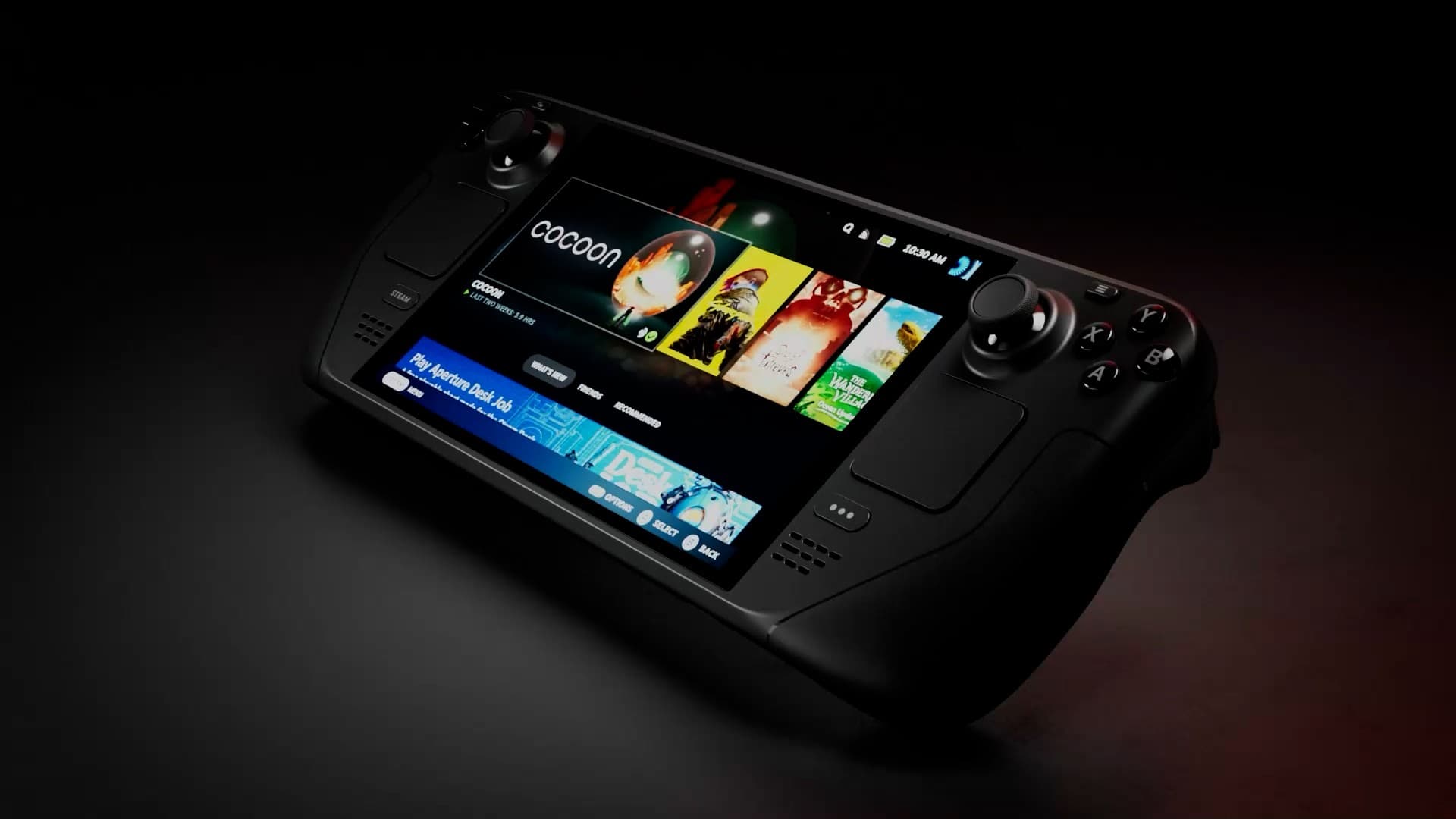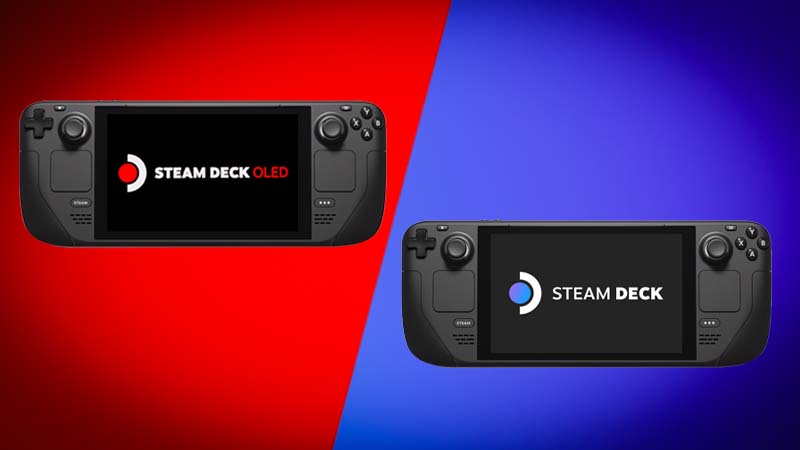The handheld gaming market has traditionally been a notoriously difficult one to break into, with several more technologically advanced competitors arriving throughout the years and subsequently failing to break Nintendo’s grip on supremacy. Though there were handheld PCs before the Steam Deck, Valve’s first new hardware in years takes all the ease-of-use of a Nintendo handheld and expands its functionality in a variety of impressive ways. Since the launch of the Steam Deck, several other competitors have stepped up to provide their own entries into the handheld PC market, but none of them are as user-friendly and foolproof as Valve’s excellent device. Still, with the handheld having a steep price point and a wide variety of applicable functions, there are some questions to ask before buying a Steam Deck.
Aside from Valve’s recent OLED update to the Steam Deck, there are also several major competing handheld PCs on the market now that each have their own pros and cons in comparison to Valve’s machine. Additionally, the Steam Deck is an incredible handheld with plenty of applications beyond just downloading and playing games off of the Steam storefront. The Steam Deck can comfortably serve as a top-shelf emulation machine as well as a remote streaming device for your consoles, making it a potential catch-all for your handheld gaming needs in a single piece of tech.
1. What is the total cost of buying a Steam Deck?
Though the cost of a Steam Deck can be seen as being slightly prohibitive, the truth is that the device more than earns its cost thanks to the various features and functionality it has. The original LCD model of the Steam Deck has three different versions — a 64GB, 256GB, and 512GB model. The core components of each of the standard model Steam Decks are the same, with the one exception being the 64GB model’s lack of an SSD. The price points for these three models increase along with the device’s storage capacity, coming in at $399, $529, and $649, respectively. However, in the wake of the release of the Steam Deck OLED, only one model of the standard LCD Steam Deck is still available — the 256GB version.
Now, players can expect to spend $399 on the LCD model of the Steam Deck with a 256GB SSD, whereas the two models of the OLED are $549 and $649 for the 512GB or 1TB SSD models, respectively. In addition to the actual cost of the Steam Deck itself, players will also want to consider grabbing some additional onboard storage for the device’s microSD slot and potentially a power bank or a dock to connect it to a monitor or television. The official Valve Steam Deck Dock retails for $79, but some third-party options range between $45 and $65. Between the Steam Deck itself and all the additional (but recommended) peripherals, players can expect to spend around $500-$800 upfront, depending on the model.
2. What are the differences between the Steam Deck and Steam Deck OLED?
Valve’s surprise release of the Steam Deck OLED last year was an unexpected but welcome surprise for anyone who had yet to pick up the handheld, as it’s much more than a simple screen upgrade. While not quite the Steam Deck 2 that many players are holding out for, the Steam Deck OLED is still akin to being the “Steam Deck 1.5” thanks to the subtle internal upgrades it makes over the original hardware. In addition to offering more onboard storage and a faster SSD for better performance and boot times, the Steam Deck OLED features better internal cooling and rearranging of the internal layout of the device to allow for noticeable improvements in battery life and stability. The OLED screen is also brighter and capable of displaying richer blacks and whites, making the colors it displays appear more vibrant.
3. Which model of the Steam Deck is right for me?
To date, there are 6 different models of the Steam Deck available for purchase at retail, whether through Valve’s official website or third-party retailers or resellers. The 64GB and 512GB models of the original LCD Steam Deck are currently no longer in production and are being phased out by Valve, making them currently available but only until that time that the current stock runs out. In-production models of the Steam Deck include the 256GB LCD model, as well as the two new Steam Deck OLED models (512GB and 1TB). In terms of which model is right for you, it really depends on what you plan on using the device for.
If planning to have the Steam Deck be the primary vehicle for all PC gaming, it’s advisable to get as much on-board storage as possible. In that case, the 1TB or 512GB Steam Deck OLED are the best options as they offer a mid-generation hardware refresh at a reasonable price point and plenty of onboard SSD storage. On the other hand, the LCD models are still great options and at a much less prohibitive price point. Space on the Steam Deck’s internal storage should ideally be reserved for graphically intensive AAA titles, while other older games or indie titles can easily boot up from a removable microSD card, making the base level $399 LCD Steam Deck with 256Gb of internal storage a great starting point.
4. Do I plan on emulating any classic games?
Steam Deck’s use of a Linux-based operating system makes it practically the perfect emulation device, and developers have been working toward refining the device becoming the best catch-all for classic gaming since its launch. Thanks to the EmuDeck software and launcher, players can easily download and install the front-end software and plugins necessary to be able to easily boot up thousands of classic games on the Steam Deck, from 8-bit titles on the NES all the way to Wii U and PS3 highlights. While sourcing the actual backup ROMs of the games you personally own is its own task and not something that EmuDeck will provide, the Steam Deck is capable of running just about anything aside from 8th and 9th generation consoles (PS4/PS5 and Xbox One/Xbox Series consoles).
If emulation is one of the primary reasons you’re thinking about grabbing a Steam Deck, it’s highly advisable to get a model with plenty of onboard storage. Additionally, a microSD card will be a necessity along with purchasing the actual console. The EmuDeck software and launcher will download to the microSD, which will also be the home for any ROM files you hope to boot up and play on the Steam Deck.
5. Do I plan on using the Steam Deck as a remote play device?
Aside from being able to play games natively from Steam and emulate thousands of classic console titles, the Steam Deck is actually a phenomenal remote-play device. Though there aren’t any officially supported remote play apps available on the Steam Deck from the major console manufacturers, independent developers have created plenty of workarounds that are easy enough to download and install. Apps like Chiaki and Project xCloud take some initial work in the setup phase but then facilitate practically seamless remote play from PS4/PS5 and Xbox Series consoles. The one caveat to consider is that these apps do require both the Steam Deck and the home console to be on the same network. A hardwired ethernet connection from the console to a modem results in better performance than using WiFi.
6. Should I wait for the Steam Deck 2?
For anyone wondering “Should I just wait for the Steam Deck 2?”, the short answer is — no. Valve itself has made it very clear that players should not expect a second iteration of its handheld PC hardware for at least another few years, and the recent refresh of the Steam Deck OLED seems like it will be around as the definitive version of the device for quite a while. Further, the price of the Steam Deck has remained consistent throughout its lifespan, meaning there’s no reason to expect that the device will have a significant price drop ahead of the launch of a successor. Ultimately, the Steam Deck in its current form factor and function more than justifies its price tag thanks to some incredible performance and a wide variety of features.
7. What online storefronts can I play games from on the Steam Deck?
Officially, players can only download and play games from the Steam storefront on the Steam Deck, meaning that titles from Epic Games Store and GOG are unplayable. That said, there are some workarounds to allow those titles to be added to the Steam Deck’s library and they also happen to run without any noticeable hiccups in most scenarios. The Heroic Games Launcher app is one of the more common workarounds players use to be able to play games from the Epic Games Store or GOG on the Steam Deck, and the app has its own dedicated forums for troubleshooting when setting it up and loading games onto the device.
Additionally, there are still thousands of games available on Steam that are not Steam Deck Verified, meaning that they either will not boot up or will run with significant performance issues on the Deck. Of course, there’s a workaround for those titles as well. Downloading and installing the latest version of Proton on the Steam Deck while in Desktop Mode will allow you to change an individual game’s boot settings, making titles that require Windows OS capable of running on the Steam Deck. With a little bit of know-how and patience, almost everything can eventually run on the Steam Deck.
8. Does the Steam Deck require a persistent internet connection?
Any game that does not require online connectivity is accessible on the Steam Deck even if not connected to WiFi. That said, some functionality is no longer available such as cloud saves and registering of achievements. Players will need to connect to a network with the Steam Deck in order to purchase and download games from the Steam storefront, as well as to receive regular updates and patches for any games currently in their library. Unlike the Nintendo Switch, once a player has a game in their Steam library, the Steam Deck will not need to verify ownership of the game online before being able to access the title with full feature parity.
9. Which handheld PC is easiest to play out of the box?
Since the release of the Steam Deck, several other competitors have come into the handheld PC market to try and challenge Valve’s dominance. Two of the more popular alternatives to the Steam Deck are the ROG Ally and the Lenovo Legion Go, each of which has its own features to make them desirable options in comparison to the Steam Deck. One of the more pronounced differences between the ROG Ally and the Steam Deck is the ROG’s use of a Windows OS versus a Linux-based OS, but one of the biggest trade-offs made in that swap is the ease of use.
While the ROG Ally, Lenovo Legion, and other competitors might offer more powerful GPU or CPU boasting better performance and graphical fidelity, they do so at the cost of being user-friendly. In terms of being able to get the device, turn it on, and begin playing, the Steam Deck is still the easiest handheld PC to pick up and play with.
The image featured at the top of this post is ©Valve Steam Deck OLED.

